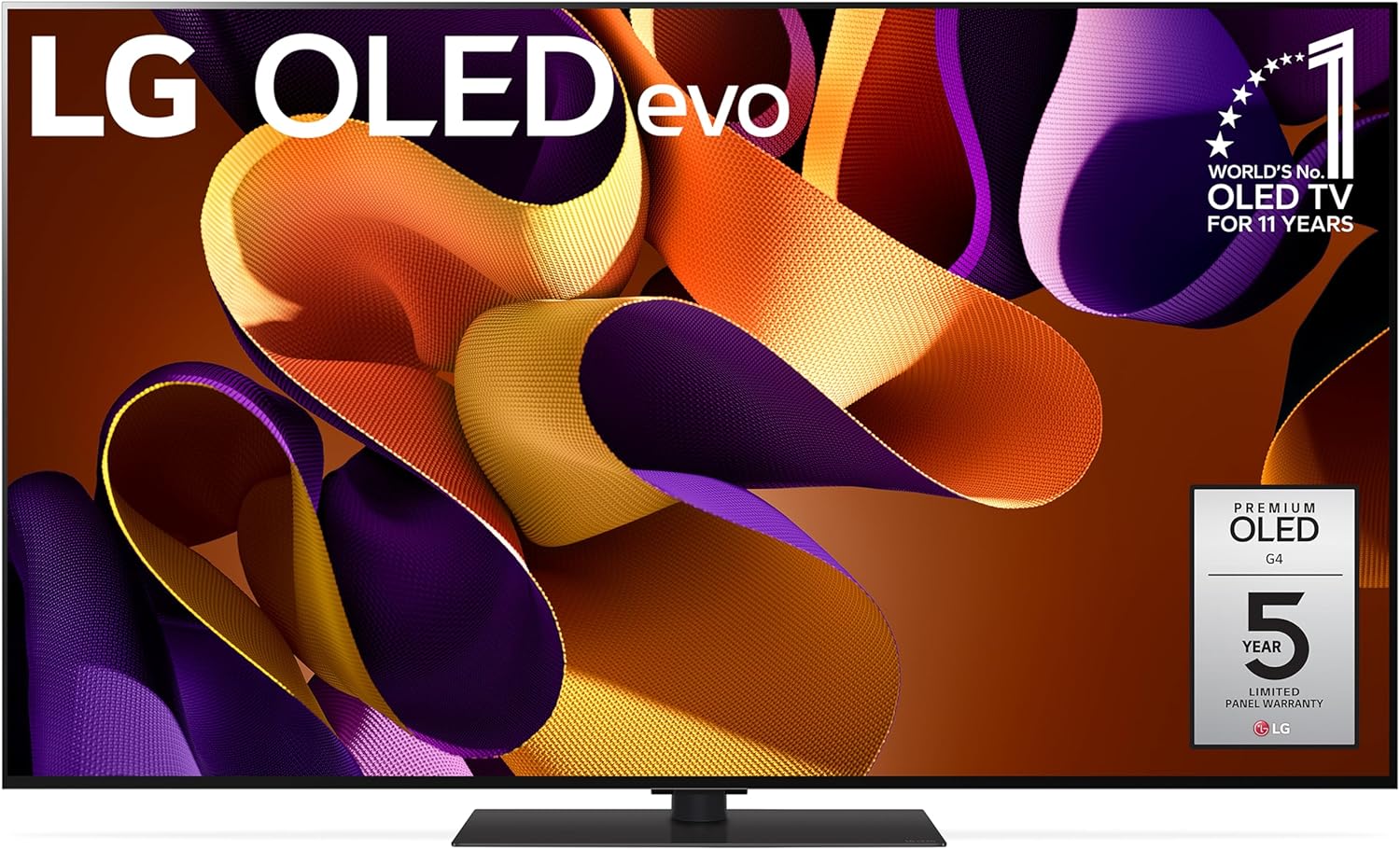LG G4 vs Samsung S95F: Which flagship OLED TV is worth the money?
It turns out that choosing between two of the best OLEDs isn't easy
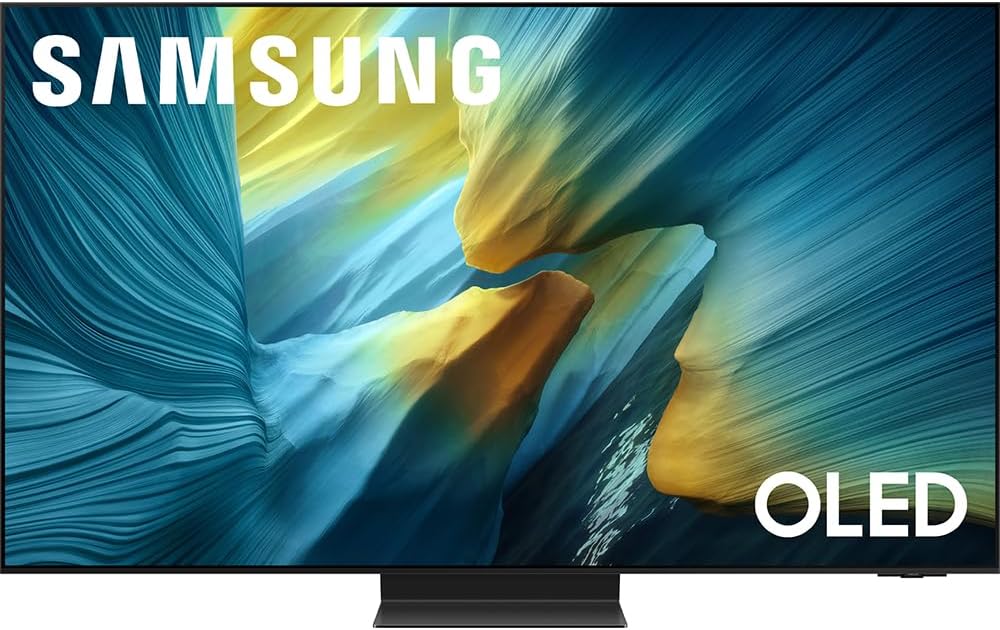
With incredible QD-OLED performance and ample features, the Samsung S95F is sure to be one of the year's best TVs. It's brand new, though, so it costs more than the LG G4.
Pros
- Stunning picture quality
- Brilliant glare-free display
- Loaded with gaming features
Cons
- Cluttered UI
- No Dolby Vision support
- No ATSC 3.0 tuner
When folks come to me and ask for advice about buying a top-shelf TV, I always start with the same question: “How important is it for you to buy a brand-new TV?”
It’s tempting to break the bank on one of the year’s best TVs, but for many people, saving money on a year-old model is a far better option.
Take this year, for instance. When all’s said and done, the newly released Samsung S95F is sure to be one of the best OLED TVs of 2025. But right now, the 2024 LG G4 OLED is every bit as good as it was when it debuted. Critically, it’s also way less expensive than the newer S95F.
If you’re stuck between the two, fear not: I’ve spent a ton of time testing and watching both of these flagship OLED TVs, and I’m here to break down all of their similarities and differences.
LG G4 vs Samsung S95F: Specs compared
| Header Cell - Column 0 | LG G4 | Samsung S95F |
|---|---|---|
Sizes | 55", 65", 77", 83", 97" | 55", 65", 77", 83" |
Ports | 4x HDMI 2.1 | 4x HDMI 2.1 |
Resolution | 3,840 x 2,160p | 3,840 x 2,160p |
HDR | Dolby Vision, HDR10, HLG | HDR10, HDR10+, HLG |
Smart TV software | webOS | Tizen OS |
ATSC 3.0 support? | No | No |
Processor | a11 AI Processor 4K | NQ4 AI Gen3 |
When their specs are compared side by side, it’s easy to see that these two OLEDs have a lot in common.
Both the G4 and the S95F come in 55-, 65-, 77- and 83-inch models (though the G4 is also available in a mind-blowingly big 97-inch version).
Additionally, each model offers a full suite of four high-bandwidth, HDMI 2.1-compatible ports. This makes them perfect for dedicated gamers and A/V enthusiasts.
Get instant access to breaking news, the hottest reviews, great deals and helpful tips.
One important distinction lies with their respective HDR support. Like all Samsung TVs currently on the market, the S95F does not support Dolby Vision, a popular, proprietary HDR format. Instead, Samsung offers HDR10+, a royalty-free version of the format that works in a similar way.
You'll still be able to watch Dolby Vision streaming titles and Blu-ray discs on the S95F, but the picture will fall back to standard HDR10. In other words, the S95F won't be taking full advantage of Dolby Vision's efforts to replicate the creator's intent.
Like all LG OLEDs, the G4 supports Dolby Vision (though it leaves off HDR10+ support). For most people, Dolby Vision is the better format to have on hand, as it remains the most popular.
To learn more about Dolby Vision, check out our guide to whether or not you need Dolby Vision at all.
LG G4 vs Samsung S95F: Design
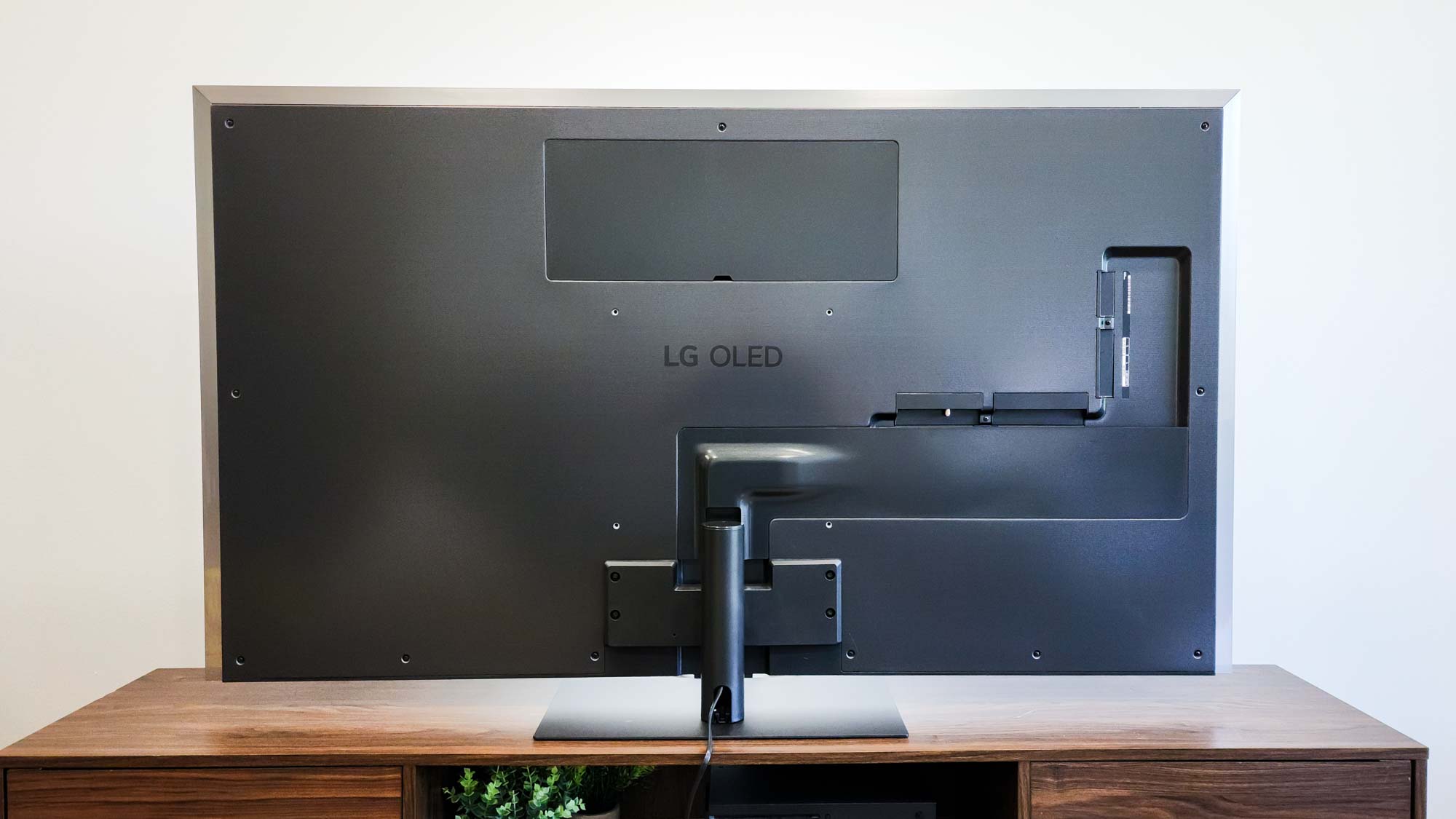
Both TVs make use of a pedestal-style stand rather than a pair of feet. Fortunately, each stand design offers enough headroom for a dedicated soundbar.
Thanks to the sleek nature of OLED display technology, both the G4 and the S95F showcase wildly thin panels. Of the two, however, the S95F is a touch thinner.
The biggest difference between their designs involves their inputs. The G4 houses all of its connectivity options in an L-shaped cutout on the pack of the panel. The S95F leverages Samsung’s One Connect Box, which connects to the panel with a single cable and can be placed anywhere within the TV’s surrounding area.
Your mileage may vary, but I appreciate the S95F’s added flexibility. If you have a particular home theater setup that would benefit from the One Connect Box, the S95F will treat you well.
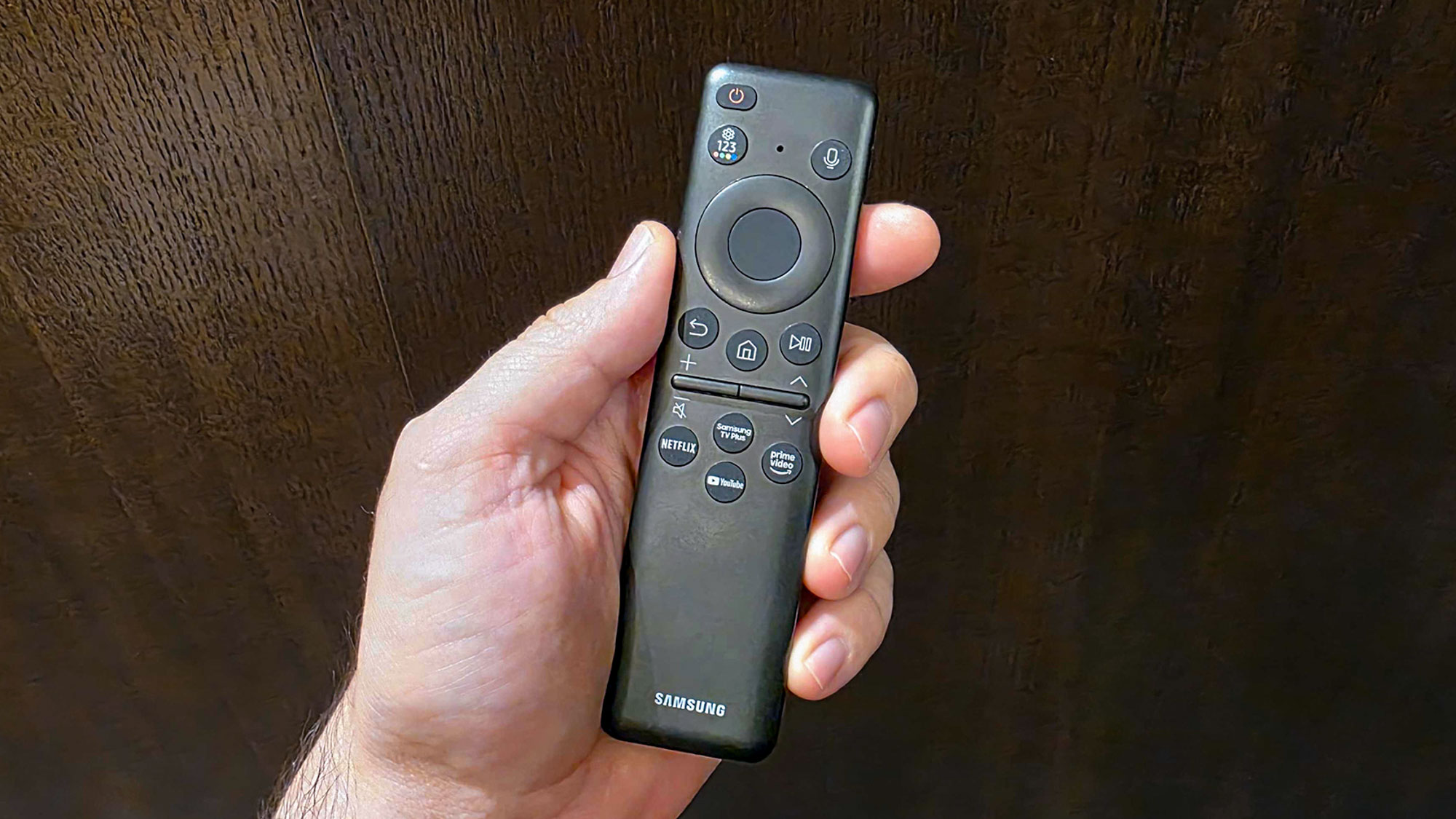
When it comes to remote controls, things aren’t as cut and dry. I absolutely adore the Samsung Solar Cell remote, which charges an internal lithium-ion battery by way of indoor and outdoor lighting. It’s very convenient.
However, the super-slim Solar Cell remote doesn’t feature a dedicated input button, and I find that to be a bit of a headache when it comes to changing inputs on the fly.
The G4 is paired with last-year’s version of LG’s Magic Remote. Conveniently, it does feature an input-selection button, but it’s also large and not nearly as convenient as the Solar Cell remote.
Each of these TVs will look great on the wall or on top of a credenza, but on the whole, the S95F is a better-designed TV.
Winner: Samsung S95F
LG G4 vs Samsung S95F: Performance
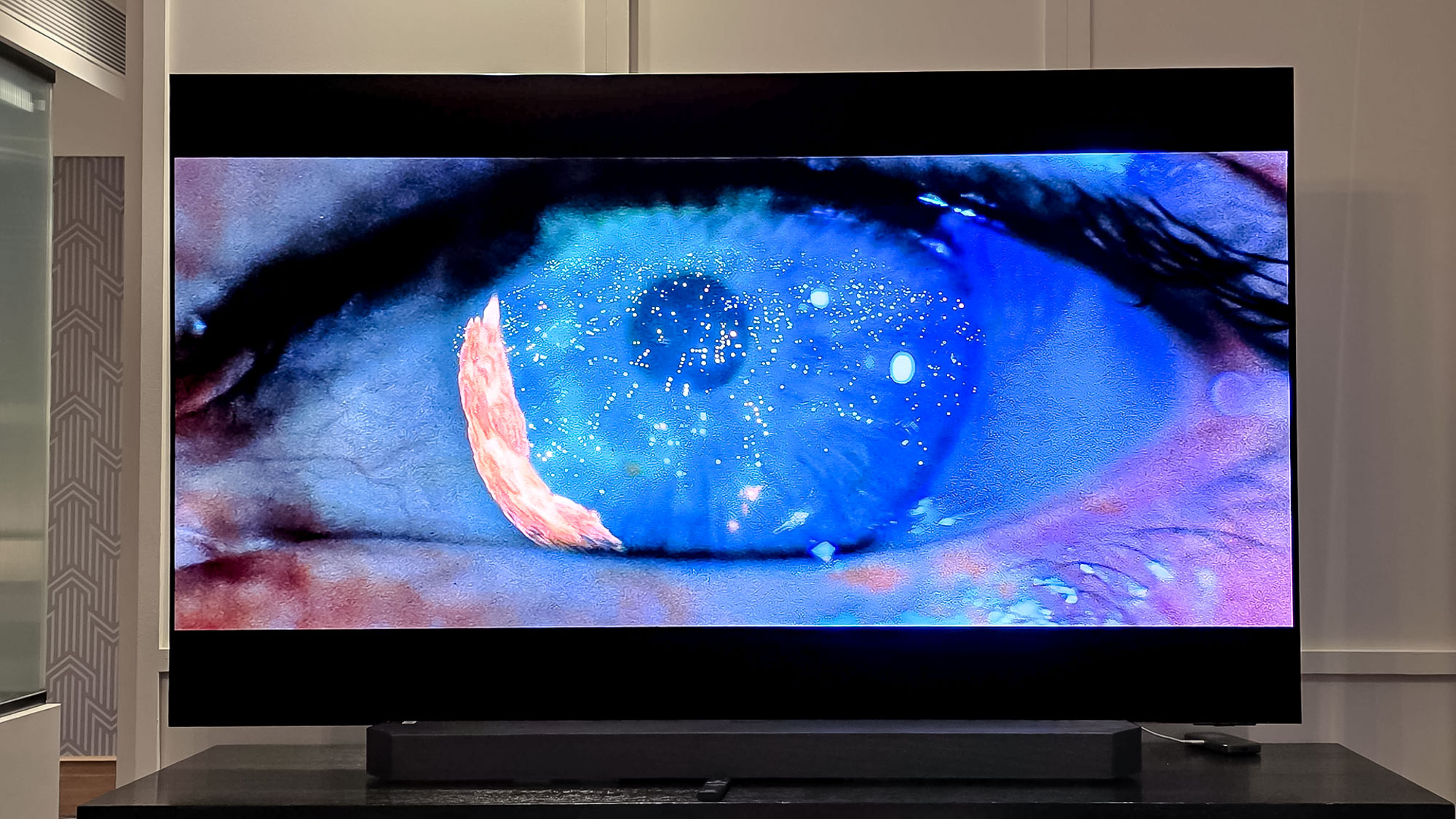
Before we dive into which of these TVs delivers better overall performance, let's take a look at how their test results stack up in a side-by-side comparison.
| Header Cell - Column 0 | LG G4 | Samsung S95F |
|---|---|---|
SDR Brightness (10%, in nits) | 358 | 267 |
Delta-E (lower is better) | 1.4 | 1.2 |
HDR Brightness (10%, in nits) | 1,487 | 2,138 |
UHDA-P3 Gamut Coverage | 97.17% | 99.97% |
Rec. 2020 Gamut Coverage | 72.91% | 90.26% |
Input latency (milliseconds) | 9.2 | 9.2 |
While both of these TVs benefit from the perfect black levels and pixel-level dimming that we've come to expect from OLED displays, the S95F is significantly brighter than the G4 when it comes to HDR content.
In a nutshell, this means that specular highlights (small, concentrated areas of brightness) will pop more on the S95F. And, when you're dealing with the self-emissive nature of OLED displays, this pop will go a long way towards the picture looking more realistic.
While watching SDR content (like basic cable and most streaming content), the G4 provides a brighter overall picture. That said, it's not significantly brighter under these circumstances, so you can probably set that aside for now.
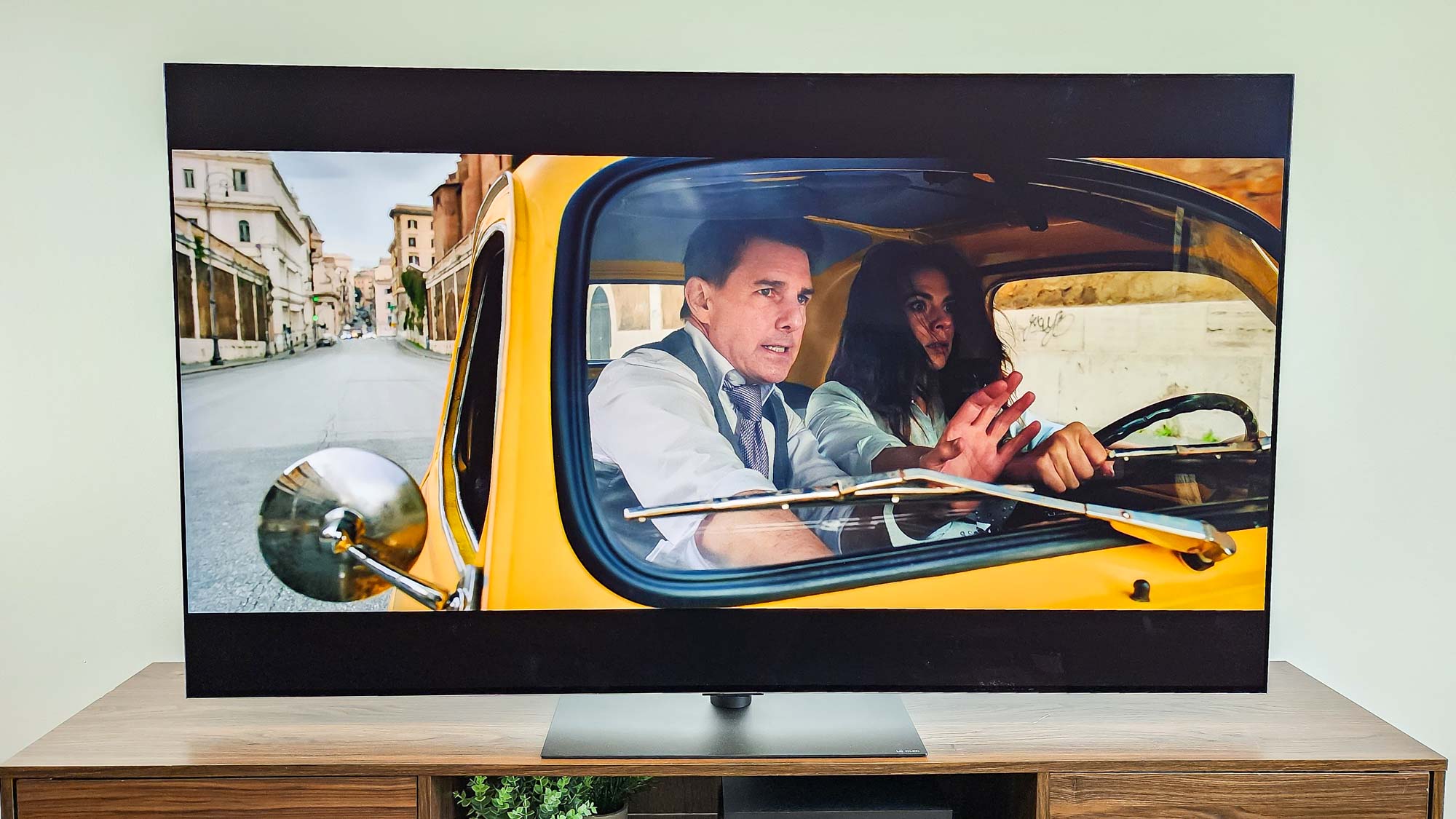
The S95F offers some of the best color we're likely to see in 2025.
Here's some good news: Each of these TVs arrives with incredible out-of-the-box accuracy in their respective Filmmaker modes. You probably won't feel compelled to calibrate them professionally, which will save you money.
However, when it comes to color volume, the S95F is far and away the better competitor. You can see this reflected in their Rec.2020 color gamut results. In fact, the S95F offers some of the best color we're likely to see in 2025 — it's that good.
This mostly has to do with the fact that the S95F is equipped with quantum dots, which allow for brighter, purer color than what the G4's WOLED display is capable of.
Both of these OLED TVs deliver an accurate, jaw-dropping picture, particularly in HDR. If you're chasing the best possible picture, though, the S95F is the better pick. Its superior highlight brightness and next-level color volume make for a truly immersive experience.
Winner: Samsung S95F
LG G4 vs Samsung S95F: Smart platform and features
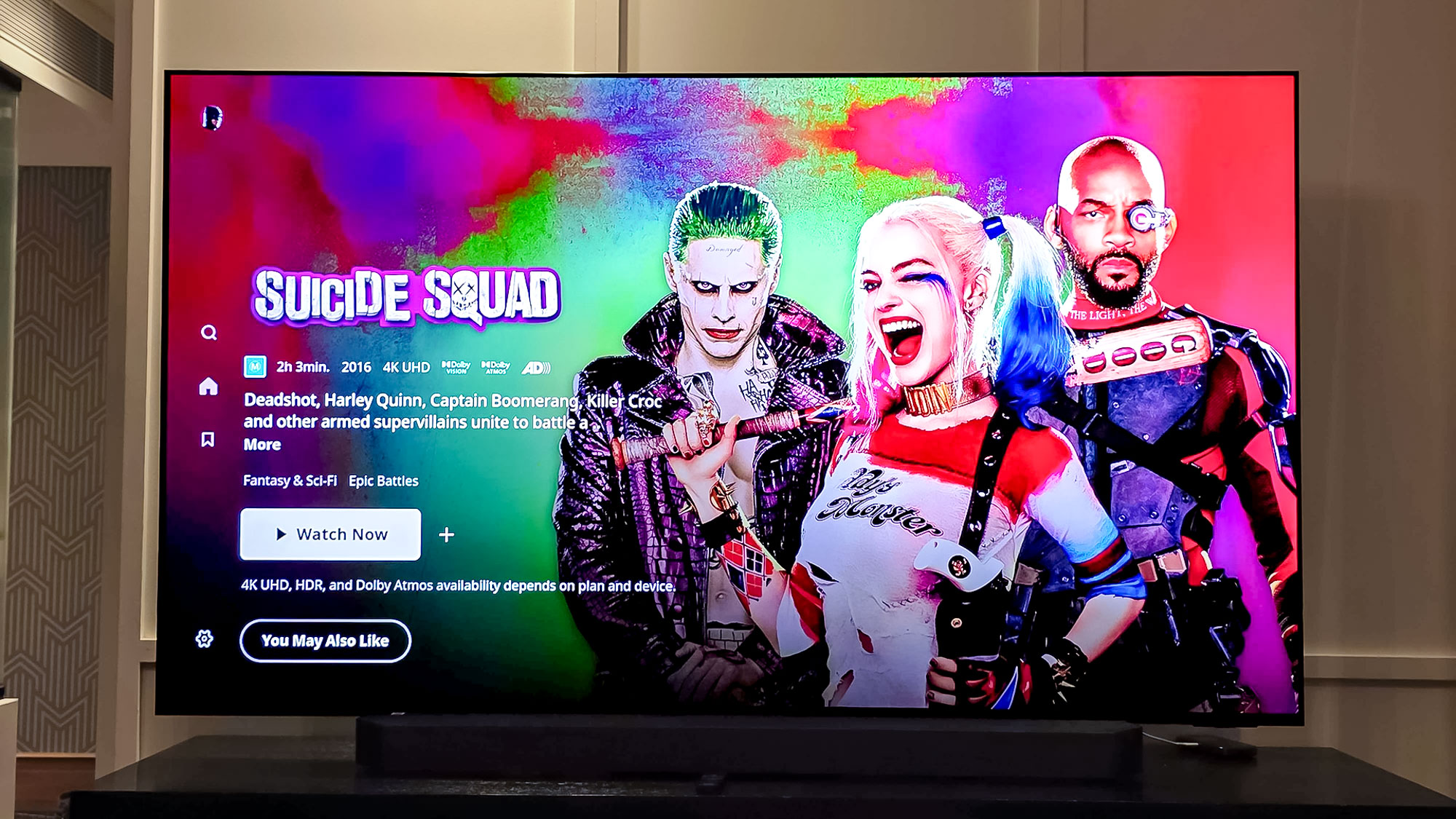
Neither LG's webOS or Samsung's Tizen OS are my smart platform of choice, but they'll get you through your day if you opt to use them on a regular basis. I find the S95F's user interface to be more cluttered than the G4's, but both software suites are fine for most people.
On the gaming side of things, there aren't very many specs separating the two. As mentioned, each TV offers four HDMI 2.1 inputs, and both support Variable Refresh Rate (VRR), G-Sync compatibility and a variation of AMD's FreeSync.
However, if you want to leverage one of these OLEDs as a monitor for high-end PC gaming, the S95F's native refresh rate of 165Hz is slightly better than the G4's 144Hz. Both can handle the 4K/120Hz cap of current-generation consoles like the Xbox Series X and the PS5 Pro.
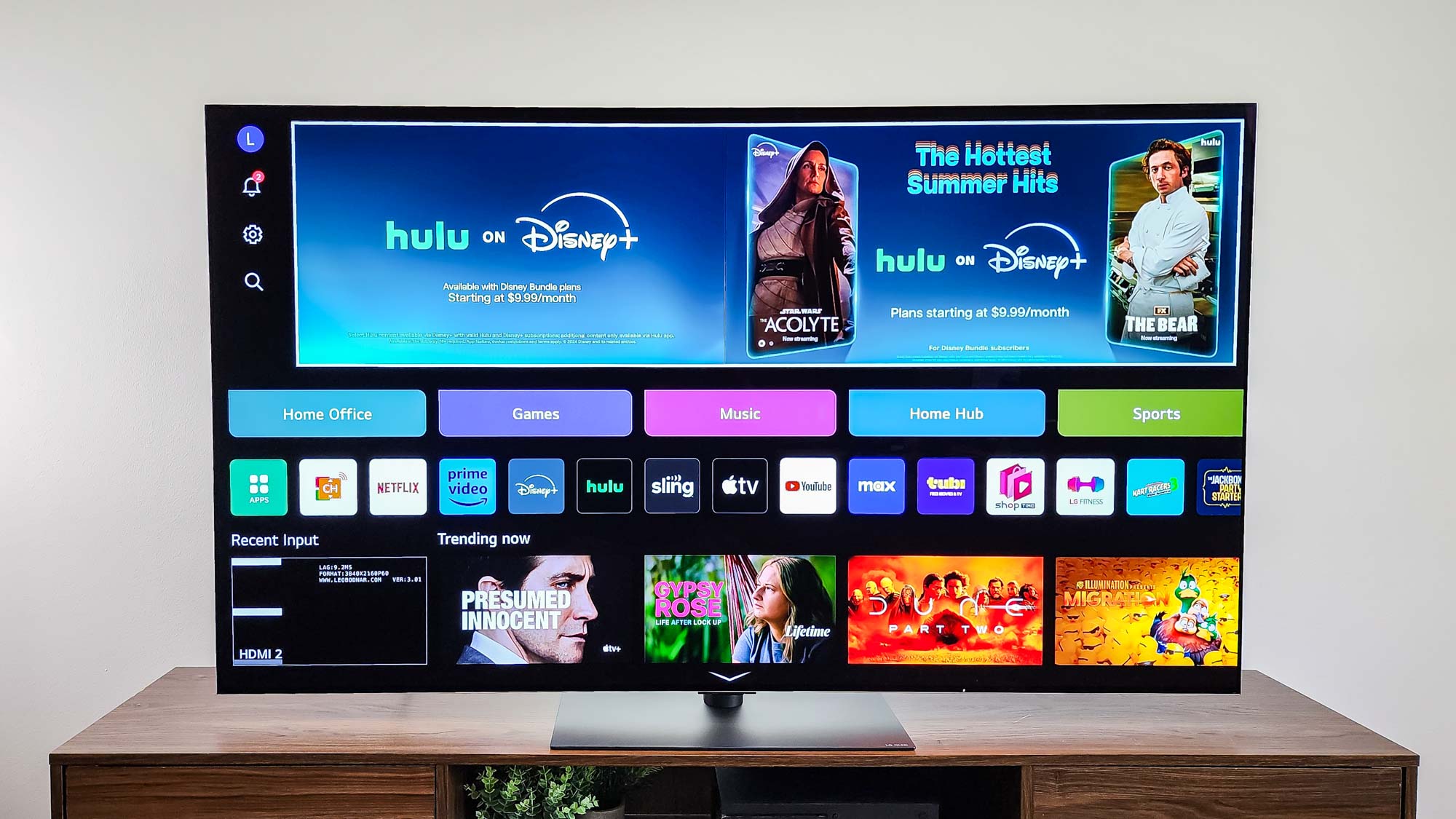
The most noteworthy missing feature on the S95F is, of course, Dolby Vision. I imagine that most folks shopping in the top-shelf price bracket have already made peace with Samsung's decision not to back Dolby Vision HDR. Still, it's a significant blow to A/V enthusiasts who'd like to put together a complete home theater setup.
In fact, I'd wager that the S95F's lack of Dolby Vision will ultimately matter to more people than the various AI-based features that S95F exclusively claims. Were it not for a lack of Dolby Vision, this category would come down to a draw. Instead, the LG G4 has the edge when it comes to features.
Winner: LG G4
LG G4 vs Samsung S95F: Which should you pick?
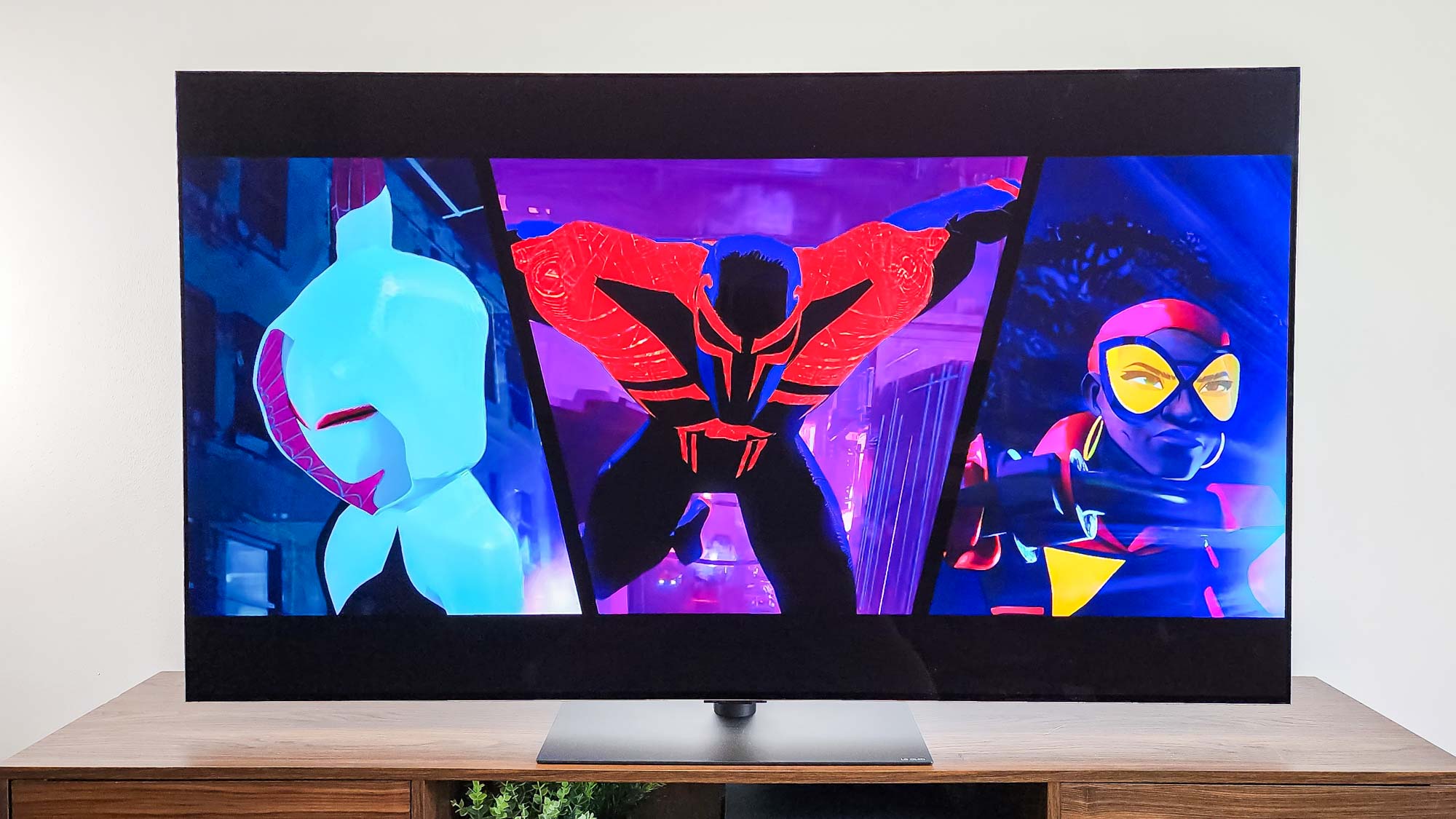
| Header Cell - Column 0 | LG G4 | Samsung S95F |
|---|---|---|
Specs (25) | 24 | 24 |
Design (25) | 21 | 23 |
Performance (25) | 24 | 25 |
Features (25) | 24 | 23 |
Total Score (100) | 93 | 95 |
One glance at the scorecard and the closeness of this match-up is clear. But one factor we haven't considered yet is maybe the most important of all: price.
After spending countless hours with each of these TVs, I'm confident in saying the Samsung S95F is the better overall performer. Its quantum dot-enhanced color, together with its sensational HDR highlight brightness, make for a sensational visual spectacle.
But there's no running away from its price. Right now, the 65-inch Samsung S95F is $3,299, and unfortunately, this is too rich for the vast majority of shoppers.
This is where my shop-for-a-year-old TV advice comes into play. By comparison, the 65-inch LG G4 is just $2,000 right now. A TV that's just about as good as the S95F for $1,300 less feels like a pretty killer deal to me. (Plus, you'll land Dolby Vision support, if that matters to you.)
If you're looking to splash out on one of the best TVs money can buy and you don't mind dropping $3,000 or more for the privilege, the Samsung S95F is a slam-dunk choice. It's eye-wateringly expensive, but it looks incredible and it's stuffed with features for gaming and beyond. Of course, if you're set on the Samsung, maybe wait a year.
More from Tom's Guide

Michael Desjardin is a Senior Editor for TVs at Tom's Guide. He's been testing and tinkering with TVs professionally for over a decade, previously for Reviewed and USA Today. Michael graduated from Emerson College where he studied media production and screenwriting. He loves cooking, zoning out to ambient music, and getting way too invested in the Red Sox. He considers himself living proof that TV doesn't necessarily rot your brain.
You must confirm your public display name before commenting
Please logout and then login again, you will then be prompted to enter your display name.
